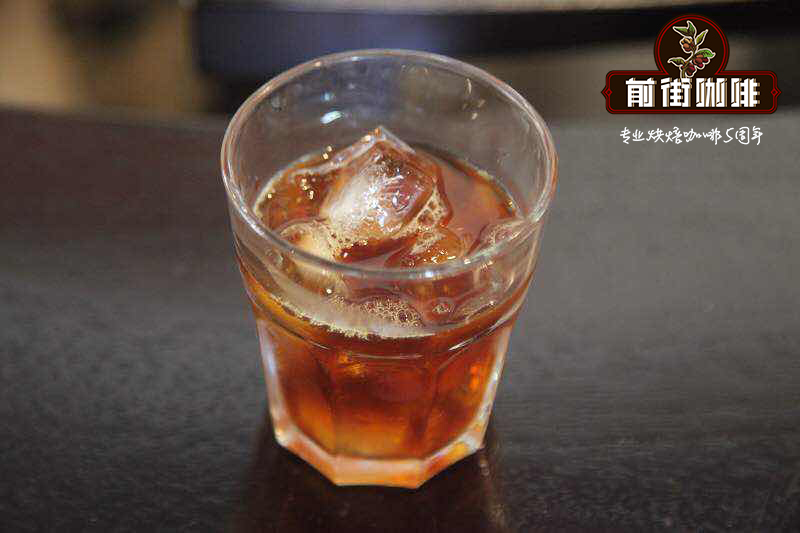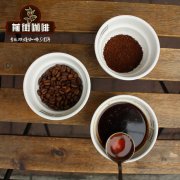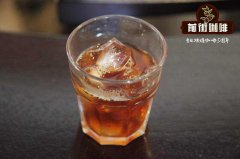What are the flavor characteristics of Indonesian Java coffee? What is the variety of Java coffee? How to make and cook

Professional coffee knowledge exchange more coffee bean information please follow the coffee workshop (Wechat official account cafe_style)
What are the flavor characteristics of Indonesian Java coffee? What is the variety of Java coffee? How to cook it to taste good?
Java coffee is sometimes called Old Java. After the old government (the Old Government), Java coffee was guaranteed to be at least ten years old in the tropics and has become a household name. Old Java coffee had a good reputation before 1915, and the beans naturally evaporated during the long journey to New York, giving the beans a better evaluation when they arrived in New York. Java beans have a special musty taste and a rare light brown.
At present, the best Java coffee is produced in Preanger, Cheribon, Buitenzorg and Batava. Java coffee has a mature, delicate, gentle taste, as well as an almost imperceptible spicy aroma, strong and mellow. It is more fragrant after aging, but not much in Java.
Java is the area where coffee has been grown for the longest time outside the native place of coffee trees. The coffee tree was introduced to Java from Malabr in 1699 at the instigation of an Amsterdam mayor.
Land: Indonesia Java, Java, Indonesia.
Wind: sweet BlackBerry and grape, combined with slightly sour and bitter taste.
Bouquet: full-bodied and full-bodied, with a sweet nutty and clear balance of sour taste.
It: the coffee trees in Java used to grow coffee in Arabica, but most of them could not survive because of diseases and insect pests, so they changed to the strong Nobasta species, Lieberita species, and the hybrid of these two species.
Coffee produced in Celebes, Renri, Flores and Timor in the Indonesian archipelago is also sold as Java coffee. These coffee beans are as good as Java beans, but the fresh beans are small, with an area of 7% of Indonesia but 35% of the country's population. It is also the first island in the Indonesian archipelago to be developed by Dutch companies. A coffee tragedy in the mid-1970s transformed the status of Java in the hearts of coffee lovers. Local coffee farms have cut down all the excellent coffee trees of Elaraby (Arabica), which are less productive and vulnerable to insect pests, and plant sturdy beans with large yields and easy to take care of (Robusta Robusta). As a result, the excellent coffee that was popular all over the world at that time almost disappeared from the world. Today, there are only six state-owned farms on the island that are owned and managed by the government, and they still grow the traditional excellent Elaraby coffee trees in Java. Thanks to these state-owned farms, we still have a chance to taste the only remaining, Java Arabica coffee, which is already extremely limited.
Wow, the coffee is all wet. Java coffee is a special coffee, it has the rich and concentrated characteristics of Asian coffee, but it does not have the common earthy smell and damp musty smell of Sumatra, Sulawesi and Bali coffee. The acidity is delicate, with natural aromas of herbs and spices, with a hint of sorghum, sweet grain and syrup, and a hint of tobacco, sometimes with subtle herbal notes in the aftertaste.
Drinking Java coffee can best experience the artistic conception of bitterness. All coffee can feel bitter only in the first few mouthfuls, and will no longer feel bitter after the mouth has adapted to that slight bitterness. Java coffee is sweet with bitterness, and every mouthful of bitterness is clear, and the return sweet is deeper and stronger than any coffee. However, Java coffee is also unstable because of the drying part and storage conditions in the process of raw bean processing, so not all Java coffee beans can have the flavor performance described above.
The only recognized perfect blend bean in the world is made of Java coffee mixed with the best Yemeni mocha coffee. Long before Java was infected with the rust spot, Java beans, with its unique flavor and Yemeni mocha coffee, was praised as the perfect combination of the most complete and fast matching flavor, red wine-like aroma, brewing-like mellow, fine fruit acid, with fructose-like fruit aroma, and pure throat rhyme, is an unforgettable memory for all who have drunk it. Although after a devastating disaster, the taste of Mocha Java is not as impressive as before, as long as it comes to blended coffee, the world all recommend the matching of Mocha Java, which proves the extent to which they are cherished!
A small number of aged coffee beans are made in Java. First, the raw beans are exposed to warm, moist air during the rainy season, and then stored for 2-3 years to age them. The color of the raw beans will change from green to light brown, and the taste will increase the concentration and consistency when the acidity is lost. These old coffees are called Old Government, Old Brown or Old Java.
Java is also a source of kopi luwak (Nuwak commonly known as civet coffee) and is the most expensive coffee in the world. Through the feeding of civets (also known as civet cats) and the baptism of gastrointestinal juices, the super coffee is unparalleled in the world. because of its rare production and special production process, it has become the most expensive and special coffee in the world.
Qianjie recommended cooking:
Filter cup: Hario V60
Water temperature: 90 degrees
Degree of grinding: small Fuji 3.5
Cooking methods: the ratio of water to powder is 1:15, 15g powder, the first injection of 25g water, 25 s steaming, the second injection to 120g water cut off, waiting for the powder bed water to half and then water injection, slow water injection until 225g water, extraction time about 2:00
Analysis: using three-stage brewing to clarify the flavor of the front, middle and back of the coffee. Because the V60 has many ribs and the drainage speed is fast, it can prolong the extraction time when the water is cut off.
Important Notice :
前街咖啡 FrontStreet Coffee has moved to new addredd:
FrontStreet Coffee Address: 315,Donghua East Road,GuangZhou
Tel:020 38364473
- Prev

Rose summer butterfly coffee Panama rose summer butterfly coffee taste rose summer butterfly coffee drink method
Professional coffee knowledge exchange more coffee bean information please pay attention to the coffee workshop (Wechat official account cafe_style) Poquet area (Boquete) is the oldest and most famous producing area in Panama, located in the east of the Baru volcano, about 12002000 meters above sea level. Among them, Baru Volcano National Park (Volcan Baru National Park) is a national ecological conservation area with a variety of biological species.
- Next

What are the brands of coffee in Sumatra, Indonesia? What is the taste of Java coffee beans tested in the cup?
Professional coffee knowledge exchange more coffee bean information please follow the coffee workshop (Wechat official account cafe_style) what coffee brands are there in Sumatra, Indonesia? What is the taste of Java coffee beans tested in the cup? How to brew just tastes good? Among the coffee-producing countries, Indonesia is a very noteworthy one. Indonesia is an island country in the Indian Ocean, and the islands are distributed at the equator.
Related
- Detailed explanation of Jadeite planting Land in Panamanian Jadeite Manor introduction to the grading system of Jadeite competitive bidding, Red bid, Green bid and Rose Summer
- Story of Coffee planting in Brenka region of Costa Rica Stonehenge Manor anaerobic heavy honey treatment of flavor mouth
- What's on the barrel of Blue Mountain Coffee beans?
- Can American coffee also pull flowers? How to use hot American style to pull out a good-looking pattern?
- Can you make a cold extract with coffee beans? What is the right proportion for cold-extracted coffee formula?
- Indonesian PWN Gold Mandrine Coffee Origin Features Flavor How to Chong? Mandolin coffee is American.
- A brief introduction to the flavor characteristics of Brazilian yellow bourbon coffee beans
- What is the effect of different water quality on the flavor of cold-extracted coffee? What kind of water is best for brewing coffee?
- Why do you think of Rose Summer whenever you mention Panamanian coffee?
- Introduction to the characteristics of authentic blue mountain coffee bean producing areas? What is the CIB Coffee Authority in Jamaica?

